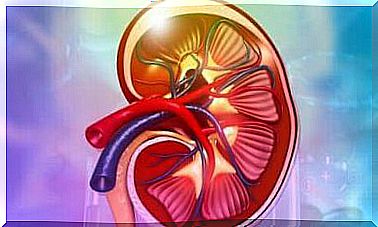Types, Causes And Treatment Of Craniosynostosis

If you want to know more about the different types, causes and treatment of craniosynostosis, read here.
Craniosynostosis is a congenital medical condition characterized by malformations of the skull.
The reason is a premature closure of the cranial sutures. These sutures have the function of attaching bones to the skull and facilitating their movement during childbirth. After birth, these structures close as the weeks go by.
The disease can cause serious complications if the child does not receive the right treatment.
Let’s take a closer look at it.
Types of craniosynostosis
Since there are several sutures in the skull, craniosynostosis is classified according to the one that is closed prematurely. The greater the obstacle to brain growth, the greater the severity. Here are some types:
1. Scaffold
When the sagittal suture (which joins the two parietal bones) is closed prematurely, a case of scaphocephaly occurs. According to the publication of the Centers for Disease Control and Prevention (CDC), this is most common. Patients have a wedge-shaped skull, which makes it longer in the anteroposterior axis.
2. Plagiocephaly
In this case, the suture is involved in the frontal suture. This extends from the lateral part of the skull to the sagittal suture. Although this structure is found on each side, plagiocephaly refers only to unilateral closure. This case involves a flattening of the forehead on the corresponding side.
3. Trigonocephaly
From a clinical point of view, it involves a flattening in the form of a triangle with a lower isp at the patient’s forehead. It is rare and it is due to a premature closure of the metopic suture. This extends from the upper part of the nose to the sagittal suture.
4. Brakycephaly
Do you remember how one of the two frontal sutures closes in plagiocephaly? In some cases, the defect may be bilateral, and in this case, brachycephaly occurs. This malformation consists of a reduction in the anteroposterior diameter, which makes the head further upwards.
5. Oxycephaly
This term is ambiguous as it can mean either premature closure of all sutures or a combination of the frontal suture and any other suture. Due to the significant limitations of brain growth, it is the most severe type. It often occurs along with other congenital defects such as the fusion of two or more fingers (syndactyly).
Causes of craniosynostosis
In most cases, the exact cause of this group of diseases is unknown. There are several syndromes associated with genetic mutations where the incidence of craniosynostosis is higher. Some of them are Apert syndrome and Crouzon syndrome, both of which are characterized by several deformities of the face.
According to environmental factors, several risk factors have been identified. These are conditions that increase the likelihood of a child being born with this disorder. Some of those where the exposure occurs during pregnancy are the following:
- Tobacco use.
- Disease of the thyroid gland in the mother.
- Use of clomiphene.
Symptoms of craniosynostosis
The clinical manifestations depend on the severity of the malformations. These are, of course, worse in the case of syndromic craniosynostosis associated with other genetic diseases.
Many of the symptoms are difficult to identify in the first months of life. Patients may exhibit constant irritability and crying. In addition to the obvious deformities in the skull, some of the main symptoms are the following:
- Headache.
- Reduced visual acuity.
- Delayed psychomotor development.
- Abnormal development of head circumference.
Possible complications
Complications occur when treatment is not started immediately. This is something that can happen due to a delay in diagnosis. Some of these clinical conditions can be life-threatening, while others can affect the patient’s future quality of life. The most common are the following:
- Endocranial hypertension syndrome: When there is a constant restriction of brain growth, the existing pressure can exceed the indulgent limits. The characteristics of this syndrome include constant vomiting, severe headache and loss of visual acuity.
- Mental retardation: If the malformation is very complex or is not treated, it can delay cognitive development.
- Optical atrophy and blindness: As a consequence of the increased pressure inside the skull, the optic nerve may suffer irreparable damage as time goes on.
- Seizures: This is also a consequence of the restriction of brain growth and the increased pressure in the cavity.
- Self-esteem problems: In the case of an unresolved malformation, it can lead to serious problems with bullying. This and other mental health problems are common in these patients.
The diagnosis of craniosynostosis
If there is appropriate prenatal monitoring, especially in mothers with risk factors, it is possible to make the diagnosis during pregnancy. This may be by using a morphological ultrasonogram, which usually takes place from week 20 of pregnancy onwards.
After birth, the diagnosis is usually clear immediately. In mild cases, however, doctors may overlook it. Since all sutures in normal cases have to be permeable so that the fetus can pass through the cervix, small malformations can be visible during the first few hours, which can cause doctors to overlook craniosynostosis.
Over time, these malformations will become more apparent. At this point, the diagnosis can be made by a consultation with the pediatrician, where the doctor notices the absence of the anterior fontanel.
It is a site located at the front of the skull – right at the point of communication of several sutures. It usually closes spontaneously before the child is two years old.
The treatment of craniosynostosis
Neurosurgery is the definitive treatment for craniosynostosis. However, it only takes place in cases of certain circumstances.
Mild cases may not even require intervention. Over time, the development of the skull usually normalizes. In some cases, doctors may even prescribe special helmets to shape it.
When a child needs surgery, the purpose is to reduce the malformation and promote the proper growth of the skull. Therefore, these patients often require ongoing medical consultations. This is because many cases of craniosynostosis have to do with genetic syndromes. It is also because there may be complications related to the neurodevelopmental defects.
What you need to keep in mind about craniosynostosis
Craniosynostosis is a common malformation that in all cases requires an evaluation by a physician.
If someone close to you suspects a case that has not been diagnosed yet, it is important to consult a pediatrician. The professional will make an initial assessment and can refer the patient to a neurosurgeon.









